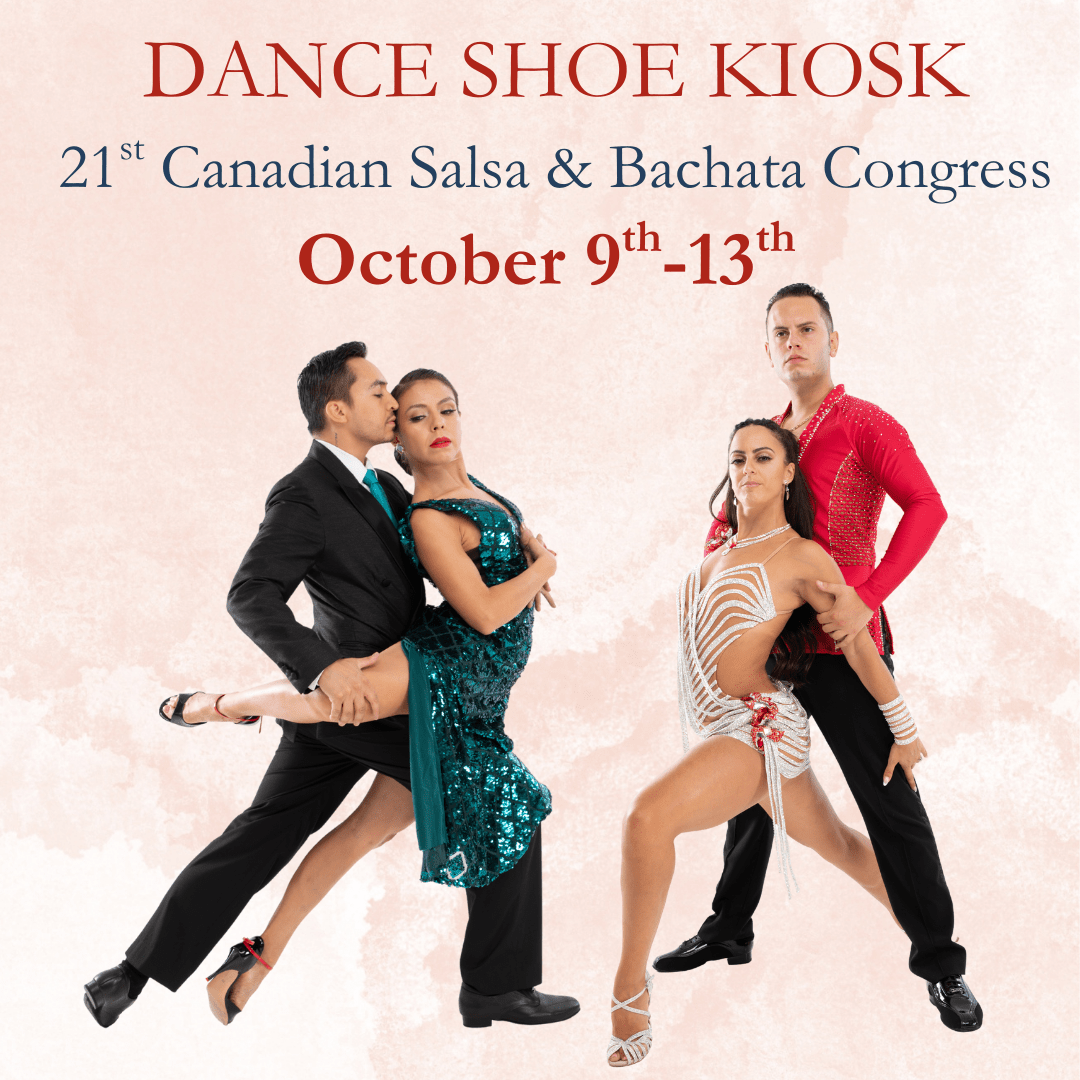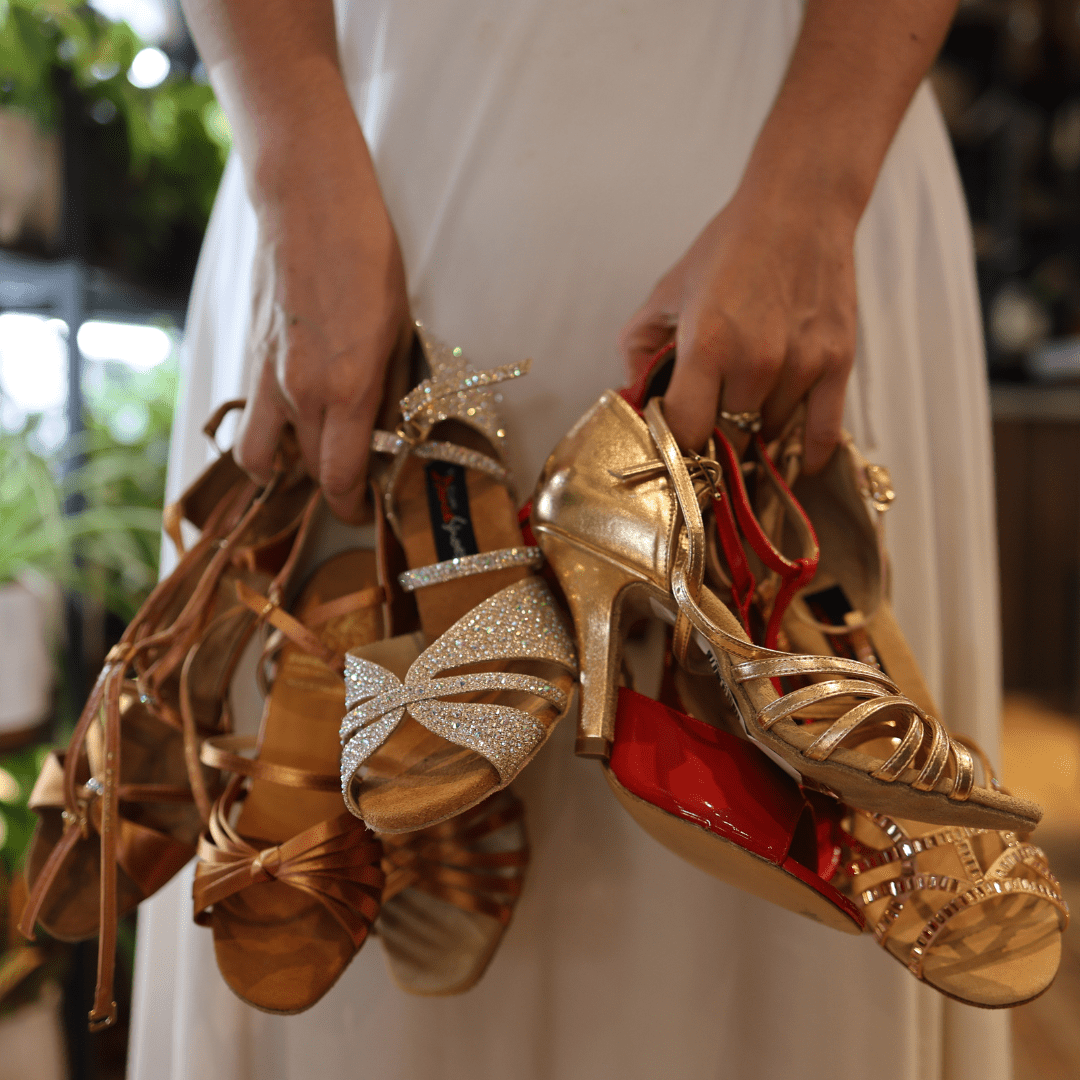
It is November 2021. As I write this, I have the score to Swan Lake playing and filling my veins as only Tchaikovsky can do, and I am so deeply deeply grateful to be dancing again. Not on Zoom, not in my basement, but back in the studio complete with group classes and party nights. And not only that, but in just a few short weeks I will be at my first competition since La Classique in 2020. I’ll also be getting out of the city for multiple days for the first time since 2019, so thank goodness I saved some vacation days...
And it feels good. I can’t say “I didn’t know what I had until it was gone”, because I knew the value of what I had -- the dancing, the community, the ridiculously wonderful amounts of fun at competitions -- but I think it’s safe to say that as much as I appreciated it before, I much even more grateful now, to have it back. This is something I need for mind, body, and soul.
During the first lockdown -- and even when we started Zoom classes -- I knew I had to do something to maintain the levels of strength, endurance, and mobility I had gained over the years of dancing. I started doing dance-inspired workouts, which truly helped keep my body in shape. They also challenged my body in different ways, and I still keep up with some of the aspects even now.
But doing dance-inspired workouts and Zoom classes is still not the same as training on a studio floor, where I can stretch my legs for my Smooth dances and not be afraid of hitting the wall, or really get into my hips and dig into the floor on my Rumba walks because I know the floor is smooth and made for my sport. So there were definitely some things that I had lost a bit and needed to regain.
In short, I experienced deconditioning of mind and body because I was not able to move the same way. As Monique DeLuca, Johns Hopkins performing arts physical therapy fellow, says: “Even if you’ve been training at home, you are likely not moving the same way, and the effects of deconditioning will occur in about four weeks,” says DeLuca. She goes on to cite six interconnected areas where dancers may suffer deconditioning from practicing in modified environments. She is speaking mainly about ballet dancers, and I have expanded some of the explanations to include ballroom.
Agility & Flexibility — Transitioning from one move to another in a dance requires both agility and flexibility in the muscles. Dévelopés and Cuban motion don’t come from stiff and tight muscles.
Coordination — Pirouettes and jumping, in general, require much coordination. In Ballroom, we don’t pirouette, per se, but fast turns (including spiral and scissor turns), require coordination of eyes (spotting), body shaping, and body movement.
Reaction Time — In a choreographed dance, many positional changes require fast reaction time. The same is true of Closed (freestyle) partner dancing. Over time, the mind and body decondition themselves to the nuances from the lead, thus meaning you may end up stepping on your partner’s toes as your body catches up to the step he/she is leading you into. And in turn, without a partner to lead, the leader’s reaction time regarding when to open/close, raise an arm, etc. will also likely be deconditioned until practice restores them.
Balance — Balance is a major component of dance. Followers should not be resting on the leader and vice versa. Without consistent practice, it’s easy to forget what this should feel like. (hint: You should be able to hold that dévelopé on your own)
Power — Dance elements such as petit allegro (jumping steps) require power to lift the body off the floor repeatedly. If you’re dancing Jive or Quickstep, the power to jump may have taken a hit over lockdown. Even if we don’t do either of those dances, power is still sacrificed without proper practice -- it’s easier to truly dig into the floor to get that Cuban motion, or squeeze my thigh muscles when collecting my feet in Smooth, when I have a floor that doesn’t hurt my feet and space to move.
Speed — Crossing the floor and other allegro-type activities depend on speedy implementation. Practicing Viennese Waltz in my basement definitely did not work. If you know, you know.
The good news is: all that deconditioning can be reversed with time and practice. The main things -- which in my opinion are the most important things, especially for newer dancers -- are to not get frustrated with what you can’t do, and also to pace yourself. Getting back into the “swing” (that’s a ballroom pun, fyi) of things will take time. And depending on your geographical location, what kind of access you have, and how comfortable you are going out, getting your body back up to its previous abilities will take more or less time. As you build back up, here are some tips that will hopefully help you to do so safely.
1. Pace Yourself
When you are finally able to return to the studio, make certain to pace yourself and monitor how your body feels. If you are primarily a social dancer and have not been doing much dancing while in lockdown, you may find yourself more fatigued than usual after a few classes. Consider starting slow and building up your endurance over the course of a few weeks. For those who train more, the same plan is also a good idea, even if you have been able to train in a modified way at home. In my case, the gradual re-opening of my studio, coupled with my home training, meant that I had a built-in gradation in returning to my full pre-COVID dance routine.
In both situations, listen to your body and build in rest periods. Fatigue leads to injury and injury is most certainly what you don’t want.
Creating a plan that allows for rest and recovery during training periods is called periodization. The goal is to prevent overtraining injuries by starting with a large amount of lower-intensity exercises and ramping up to fewer sets with higher intensity. This way, you are in your top shape before an audition or performance and can wind down for a period of rest afterward. “While there is usually no off-season in dance, the coronavirus has resulted in a long break for many dancers, and plenty of time to prep for competitions and performances,” says DeLuca.
And as you pace yourself, remember to not become frustrated with the ability you’ve lost -- after all, these are strange times. With time and practice, you’ll be back to normal.
2. Start small
If it’s been a while, don’t try and do the highest dévelopé or kick you can. Your muscles will not thank you. A deconditioned body does not have the same degree of flexibility and agility, etc. that you had previously. So start with the basics to help muscle memory start warming up. Spiral turns, dévelopés, long Smooth strides, and full on Samba-style hip motion will take a while to return if you haven’t been able to practice them at full range. And the danger in going all-out on your first day back is that since muscle memory is dormant, the wrong muscles will compensate, and that in turn can lead to injury.
3. Fitness Training
Depending on where you fall on the spectrum of dancing -- from social to competitive -- this particular point will have differing degrees of weight. I’ve been doing fitness training for years already, so it’s already part of my routine. There are three main types to consider:
a. Aerobic. Dance is an aerobic sport. You will sweat. If you’re not...you’re doing it wrong. But you can’t go 0 to 60 without killing yourself, so doing aerobic training to build up and strengthen cardiovascular conditioning will help you get there intact. YouTube is an excellent way to access free workouts, but there are also free HIIT and Tabata apps available for iPhone and Android that can help you as well. One that is specifically for dance, is an online subscription to Dance & Co., which offers tons of dance workout content from professional dancers in the industry.
b. Muscular fitness workouts. I know, I know. Not everyone likes doing weights. I get it. But that frame won’t hold itself. Done twice a week, this will help maintain your muscles. If you’ve never done weight training before, talk to a trainer at a gym and they will be happy to help you determine what’s best for you, all without hurting yourself.
c. Musculoskeletal flexibility workouts. As dancers, we need to be able to move. Stretching the muscles is integral to that. There are static stretches, where you hold one position for a count to stretch the muscle; this is best done when your muscles are warm after a workout. There are also dynamic stretches, which are repetitive motions done before or during a workout in order to stretch the joint to its full range. Yoga is an excellent way to do dynamic stretches, and there are courses suitable for all levels. Another good way to do some dynamic stretching is to search for “five minute ballet warm up” (with or without barre) on YouTube. There are many excellent videos available. Again, if you’re unsure how to proceed, speak with a gym trainer and they will be happy to help you, while ensuring you don’t over-stretch and pull a muscle.
To conclude: dancers are the athletes of God, to quote Albert Einstein. Our bodies are our canvases, and we each must work within our own ability. Getting back into it can be hard, but with some hard work and patience, you can recondition yourself.
We hope to see you on the floor very soon.
Note: I’ve adapted and expanded parts of the Johns Hopkins article, which you can find here:
https://www.hopkinsmedicine.org/health/conditions-and-diseases/coronavirus/dance-conditioning-returning-to-the-studio-after-coronavirus-isolation




